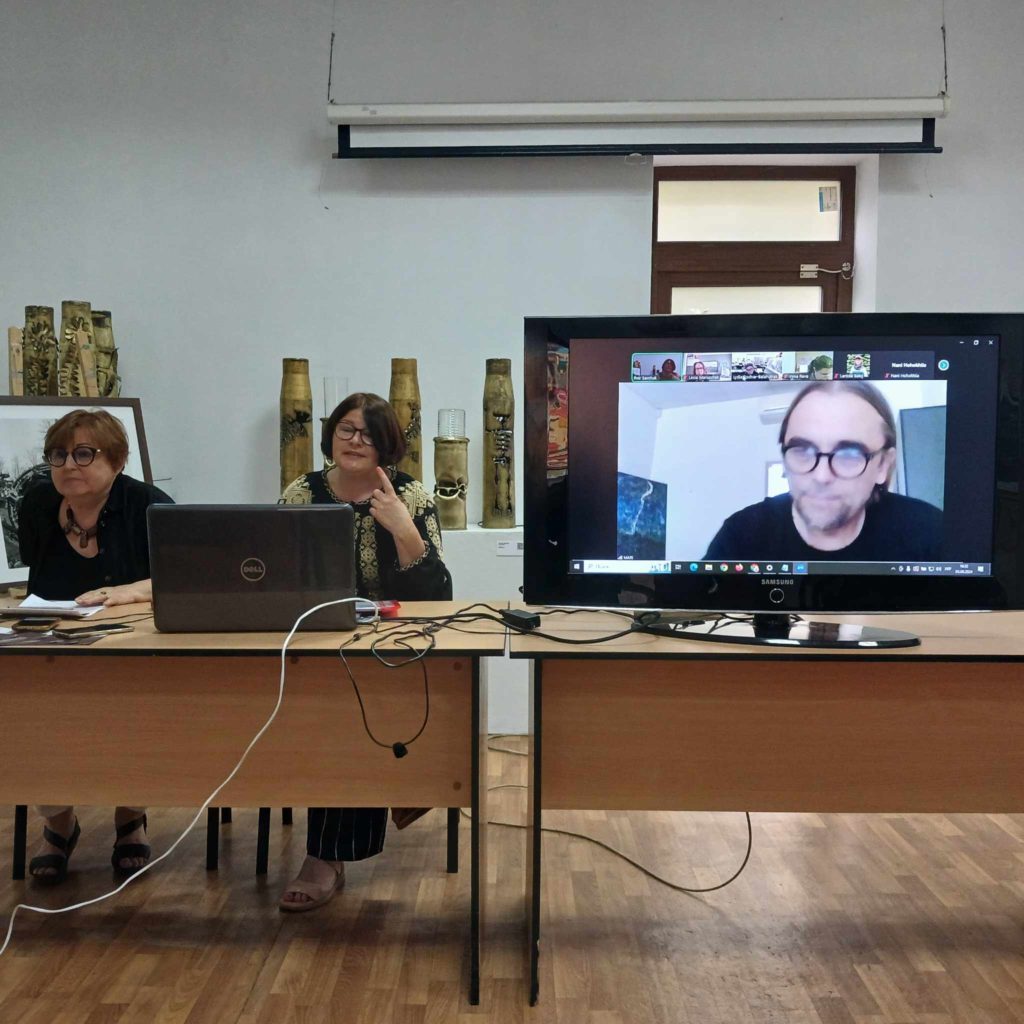Employees of the Holodomor Museum participated in the roundtable
On September 5, in Kyiv, employees of the National Museum of the Holodomor Genocide participated in the roundtable: “Through children’s eyes: mental wanderings in the apocalyptic world. The past in the dialogue of modernity”.
The event was at the Institute of Contemporary Art Problems of the National Academy of Sciences of Ukraine as a part of the exhibition project “Lesia Marushchak. Poetry of our children”.


Childhood in times of disaster is a significant and tragic topic that can and should be studied within different disciplines. In the roundtable discussion, scholars and artists from Ukraine, Canada, and the United States discussed strategies for narratives, research, and actions regarding Ukrainian children affected by historical catastrophes. A significant part of them emphasised the fate of little Ukrainians during the Holodomor genocide.
Among the speakers were: artist and curator, author of the exhibition “Poetry of our Children” Lesia Marushchak (Ottawa, Canada); artist, author of the art project “Another Kind of Icon”, dedicated to the children of victims of the Holodomor of 1932-1933, Lydia Bodnar-Balahutrak (G Houston, USA); writer and translator, author of the book “A Kind of Refugee” Larysa Babii; director of the Museum of the Ukrainian Diaspora Oksana Pidsukha; art critic and cultural researcher, head of the art department of the latest technologies of the Institute of Problems of Contemporary Art, Oksana Remeniaka. Among the participants of the roundtable was the Deputy Director General of the Holodomor Museum, Anna Sokyrina, the head of the oral history department of the Holodomor Museum, Yuliia Kotsur, the head of the Genocide Research Department of the Holodomor, Museum Mykhailo Kostiv, and the leading researcher of the Holodomor Museum Andrii Ivanets. Our museum staff joined the event at the invitation of the artist Lesia Marushchak, with whom we had already implemented joint projects at the Holodomor Museum.
In his speech, Andrii Ivanets emphasised the importance of knowing the experience of survival and preservation of the national identity of Ukrainian children in the catastrophes of the 20th century. He reminded us about the present when information about the murders, torture or rape of children by the occupiers, about the injuries of young Ukrainians caused by forced relocations and migrations, about the “brainwashing” and militarisation of childhood with the rashism ideology of rashism strikes Ukrainian children in the occupied territories like an electric current. In this regard, he reminded us about the strength of Ukrainian identity by using the life of the artist Petro Andrusiv (1906–1981) as an example. At the age of eight, during the First World War, Russian soldiers took Petro from a village in Halychyna to Russia. Later, Polish prisoners of war took him to Warsaw. When he reunited with his parents in the 1920s, he could not even speak Ukrainian with them. Despite this, Petro Andrusiv became a prominent Ukrainian master of painting, and he created a series of large-format paintings depicting the history of Ukraine-Rus, which every nation could be proud of. Andrii Ivanets reminded us that among the contemporaries of the Holodomor, the paintings of Viktor Tsymbal and Petro Andrusiv most artistically powerfully depicted the genocide of Ukrainians in 1932–1933. Unfortunately, Andrusiv’s large painting “The Golgotha of Ukraine” was destroyed during the Second World War and today is known only for photos.
